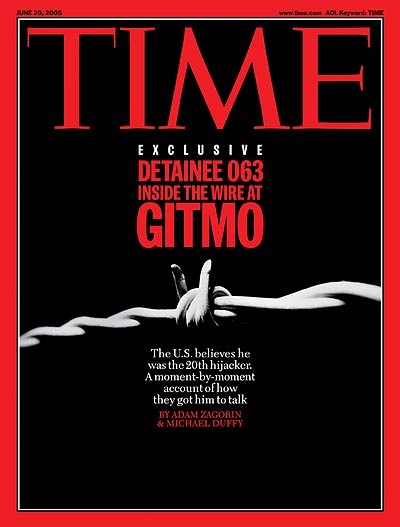
Democrats on the Senate Intelligence Committee have released a 500-page summary of an over-6,000-page report detailing the CIA’s interrogation programs during the George W. Bush Administration. The $40 million, five-year investigation concludes that the CIA “misled” the government and the public about the effectiveness of its so-called enhanced interrogation techniques, according to the Washington Post, and will rebuff claims that that the methods—which President Barack Obama has ended—were necessary in disrupting terrorist plots.
The debate over the effectiveness of torture in the War on Terror has been going on for years. In 2005, TIME detailed how the military interrogated Mohammed al-Qahtani, known by the public as the 20th hijacker and by Guantánamo Bay officials as Detainee 063. The article included excerpts of the secret interrogation logs of al-Qahtani from the winter of 2002 and 2003—exploring techniques like “Invasion of Space by a Female,” which leads al-Qahtani to ask his captors for a crayon to write a will after his suicide. The story also documents al-Qahtani’s 12-hour interrogation sessions, hunger strikes and heartbeat dropping to 35 beats per minute.
“The interrogation log gives a rare window into the techniques used by the U.S. military, suggesting at least in this case that disclosures were sometimes obtained not when al-Qahtani was under duress but when his handlers eased up on him,” wrote the article’s authors, Adam Zagorin and Michael Duffy. “How should a democratic nation proceed when it captures a high-value prisoner like al-Qahtani, when unlocking a mind that might save lives? Experts acknowledge that brute torture generally doesn’t work because a person will say anything to stop the pain. So what, exactly, is effective? And when do the ends justify the means?”
“In the war on terrorism, the personal dignity of a fanatic trained for mass murder may be an inevitable casualty,” they added.
In 2006, al-Qahtani’s lawyer, Gitanjali S. Gutierrez, told TIME that his client had repudiated all of his previous statements made to his interrogators, claiming that they were made under torture, and TIME released the entire record of al-Qahtani’s treatment. Al-Qahtani’s war crimes charges were dismissed in May 2008 and he remains at the U.S. detention center at Guantánamo Bay, where he has been held for nearly 13 years. The 2005 cover story, Inside the interrogation of Detainee 063, and accompanying 84-page secret interrogation log can now be read for free here.
In recent days, Republicans and former CIA officials have shot back at the upcoming Senate Intelligence report. Jose A. Rodriguez, who ran the CIA’s interrogation program in the aftermath of 9/11, wrote in the Washington Post Friday that congressional leaders, including House Democratic Leader Nancy Pelosi—who has said the CIA lied to her about waterboarding—were properly briefed and that the program provided valuable intelligence about al Qaeda.
“The interrogation program was authorized by the highest levels of the U.S. government, judged legal by the Justice Department and proved effective by any reasonable standard,” he wrote. “The leaders of the Senate and House Intelligence Committees and of both parties in Congress were briefed on the program more than 40 times between 2002 and 2009. But Rep. Nancy Pelosi tried to deny that she was told in 2002 that detainees had been waterboarded. That is simply not true. I was among those who briefed her.”
Read the full 2005 report, free of charge, here in the archives: Inside the Interrogation of Detainee 063
Read the interrogation log: Detainee 063
More Must-Reads From TIME
- The 100 Most Influential People of 2024
- Coco Gauff Is Playing for Herself Now
- Scenes From Pro-Palestinian Encampments Across U.S. Universities
- 6 Compliments That Land Every Time
- If You're Dating Right Now , You're Brave: Column
- The AI That Could Heal a Divided Internet
- Fallout Is a Brilliant Model for the Future of Video Game Adaptations
- Want Weekly Recs on What to Watch, Read, and More? Sign Up for Worth Your Time
Contact us at letters@time.com